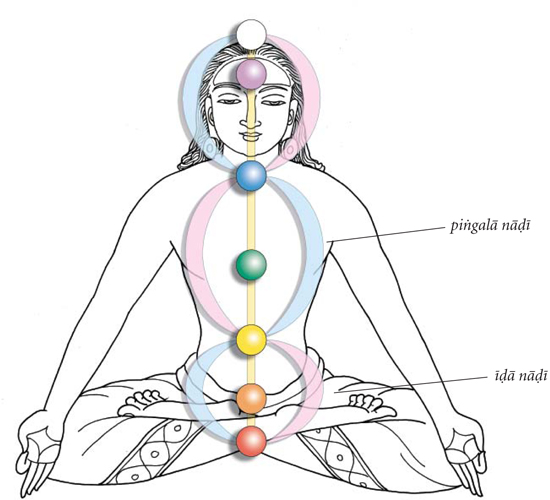
Mamsanī Shuhmīmf
Shūm-Tyēīf Meditation for the Month of July
The first portrait in this mamsanī is a practice of the inner feel within the fourth dimension when awareness is in the area of the mind named kalībasa. The breath is regulated from the inside out—nine counts in, holding one beat, and nine counts out, holding one beat. When you are aware within this particular area of the mind from the inside out, your breath will automatically be regulated. But to get into this area of the mind, called kalībasa, you can also regulate your breath from the outside in. So, it can be approached in either one of two ways. §
The next portrait, vūmtyēūdī, is the vibration of the intellectual area of the mind. When we are in the area of the mind that is always thinking, aware of thought patterns, reason patterns and memory patterns, this is called vūmtyēūdī. It is a fourth-dimensional area. Karehāna is also within the fourth dimension. It names the “feel” of the physical body, the magnetic forces of the physical body, the instinctive nature of the physical body and the emotional unit. §
Nīkashūm is the wonderful practice of withdrawing the energies of awareness from vūmtyēūdī and karehāna into their source. Nīkashūm. As we breathe in, kalībasa, we pull the energies back out of the physical body, out of the emotional, out of the intellectual, into the spine. Nīkashūm, the withdrawal of energies, is a third-dimensional picture. And when you are in that area of the third dimension, nīkashūm is what automatically happens. §
1) Breath control, called prāṇāyāma in Sanskrit; 2) a diaphragmatic breathing practice; 3) the breath’s rhythm during nīkashūm—nine counts in, hold one count, nine counts out, hold one count; 4) the duration of the inhalation is the same duration as the exhalation; 5) counting should be on the heartbeat; but, to begin with, the counting does not have to be on the heartbeat, as this will naturally occur when kalībasa has been mastered; 6) the breathing should be done through the nose; 7) during the inhalation of nine counts, the diaphragm is pushed downwards and the stomach gently pushed out as the air is taken in; 8) during the exhalation of nine counts, the diaphragm comes up, and the stomach is gently pulled in as the air is released.§
vūmtyēūdī  09.11.14.17§
09.11.14.17§
1) The current, blue in color, that flows upward, ending on the right side of the body; 2) called piṅgalā in Sanskrit; 3) this current, masculine-aggressive in nature, is the intellectual-mental energy within the being; 4) the intellectual energy which causes one to think and to become aware of the intellectual mind; 5) vūmtyēūdī is one of the currents of simshūmbīsī».§
karehāna  07.10.12.15§
07.10.12.15§
1) The current, pink in color, that flows downward, ending on the left side of the body; 2) called īḍā in Sanskrit; 3) this current, feminine-passive in nature, is the physical-emotional energy within the being; 4) karehāna is one of the currents of simshūmbīsī».§
nīkashūm  06.07.18§
06.07.18§
1) The art of withdrawing the energy into the spine through the use of prāṇāyāma; 2) names the process of drawing the magnetic energy from the subtle nerve fibers (nāḍīs), which surround the body, into the spine; 3) when a devotee enters meditation, the energy is drawn from the conscious mind into its subconscious; 4) then the energy of the subconscious is drawn into the subsuperconscious; 5) when this happens, the devotee becomes conscious in the inner states of mind. §
Major Currents of the Spine §
Illustrated above are the two currents that we are meditating on in this mamsanī: karehāna and vūmtyēūdī. These are psychic nerve currents through which prāṇa flows from the central source, Śiva. Karehāna and vūmtyēūdī intertwine the spinal column (shown, for sake of illustration, diverging far outside the sushumṇā, the central current within simshūmbīsī»). They begin at the mūlādhāra chakra, cross at the maṇipūra and the viśuddha chakras and meet at the sahasrāra. Karehāna (īḍā nāḍī in Sanskrit), pink in color and feminine in nature, is the channel of physical-emotional energy. Vūmtyēūdī (piṅgalā nāḍī in Sanskrit), blue in color and masculine in nature, is the channel of intellectual-mental energy. Sushumṇā, pale yellow in color, passes through the spinal column from the mūlādhāra chakra at the base to the sahasrāra at the crown of the head. It is the channel of kuṇḍalinī. §

 07.05.38.39
07.05.38.39